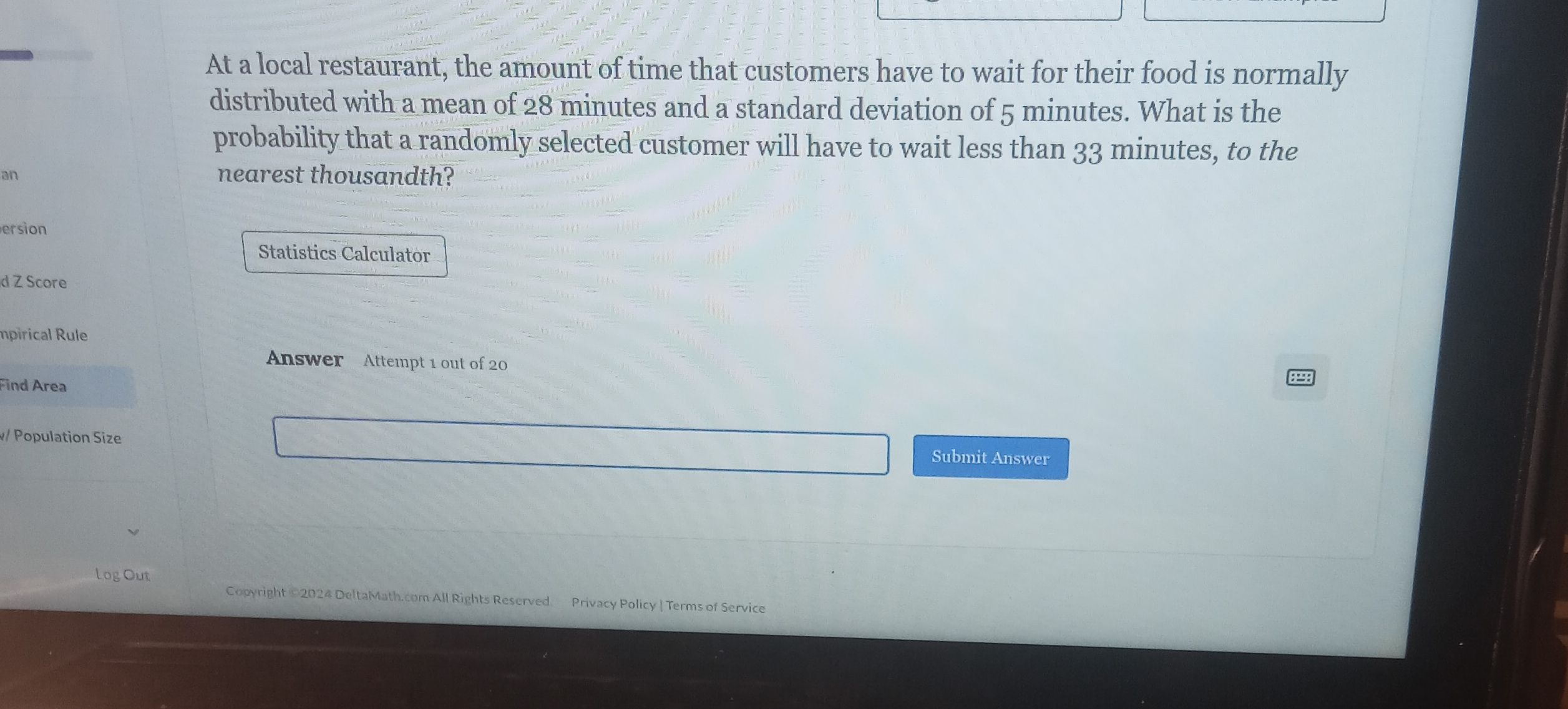AI tutor
Welcome to Bytelearn!
Let’s check out your problem:

At a local restaurant, the amount of time that customers have to wait for their food is normally distributed with a mean of minutes and a standard deviation of minutes. What is the probability that a randomly selected customer will have to wait less than minutes, to the nearest thousandth?
Full solution
Q. At a local restaurant, the amount of time that customers have to wait for their food is normally distributed with a mean of minutes and a standard deviation of minutes. What is the probability that a randomly selected customer will have to wait less than minutes, to the nearest thousandth?
- Calculate z-score: To find the probability that a customer will have to wait less than minutes, we need to calculate the z-score for minutes using the mean and standard deviation provided.The formula for the z-score is:where is the value we are looking at ( minutes), is the mean ( minutes), and is the standard deviation ( minutes).
- Find probability: Let's calculate the z-score for minutes:The z-score is .
- Use standard normal distribution: Now that we have the z-score, we can use the standard normal distribution table or a calculator to find the probability that a z-score is less than . The standard normal distribution table tells us the probability that a z-score is less than is approximately .
- Calculate final probability: Therefore, the probability that a randomly selected customer will have to wait less than minutes is , or to the nearest thousandth, .
More problems from Interpret confidence intervals for population means
QuestionGet tutor help
QuestionGet tutor help
QuestionGet tutor help
QuestionGet tutor help
QuestionGet tutor help
QuestionGet tutor help
QuestionGet tutor help
